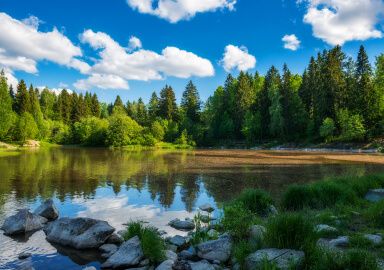Arctic Char
Arctic char are a top, and in some cases, the only, fish predator of cold water rivers, lakes and marine margins around the Arctic Circle.
View 5 listings
5
listings
–
price starting from
4
countries
–
to the nearest trip
Where and When?
Arctic char are the freshwater fish species most able to survive and often thrive, in very cold water. They are found right round the Arctic Circle from Siberia through Scandinavia, Iceland, Canada and Alaska. They are the only freshwater fish found in many of the really cold lakes. The Arctic char that remain in the lakes are described as “lacustrine”, “riverine” are ones that live in rivers and “anadromous” are individuals that spend time in the oceans. populations of Arctic char have individuals that appear to choose any or even all of these “lifestyles”. While those in rivers may be in shallow water, most lake or ocean living Arctic char are to be found in deep water. Arctic char are rarely found in much of Europe, only in the deep of cold Alpine Lakes and even there may be very scarce. Most char fishing, recreational, commercial and aquaculture, is carried out in Canada and Alaska. They spawn in rivers and shallows in June and July, - the northern hemisphere summer - and fishing in many areas is only allowed in two “window periods'' around this time. The best Arctic char fishing is usually around the breeding period.
About Arctic Char
The Arctic char has been described, in terms of overall appearance, as one of the most variable vertebrate species in the world. While its shape and appearance is “typical” of many other members of the Salmonidae family, its colours vary from silvery, through reds and pinks, to almost black over much of the body. It also has two “forms” - sometimes called the dwarf and giant. The former rarely grows larger than 2.3 kilograms (7 lbs. 9 ounces), while the latter can be up to about 5.1 kilograms (9 lbs. 15 oz.). On top of this, in the spawning season, there is marked sexual dimorphism, with the males being much darker with the tell-tale, salmonid males’ “kype” hook on its lower jaw. The largest Arctic char reach about 9 kilograms (20 lbs.) and 1.07 meters (42 in.) in up to 40 years of life and they all mature at 4 - 10 years of age and 50 - 60 cm (20 - 24 in.) of length. All char are predators, and feed mostly on fish, but also on large numbers of invertebrates - particularly when juvenile. Wherever they occur they have to spawn in freshwater, but this can happen in shallow, gravelly lake bays or in streams. Males set up clear territories and interact with multiple females. Most char survive repeated spawning, unlike many other salmonids.
How to Catch?
The easiest and most popular and, often successful, way to catch Arctic char is to target them in rivers and shallows when they are preparing to spawn. Catching Arctic Char in the ocean is not easy without a boat, good equipment and local knowledge; river fishing, therefore, is the choice of most anglers wanting to catch them. In the bigger rivers and lakes spinning is a popular and often successful fishing method, while fly fishing is often the preferred method in mountain streams. Sizes of fish being targeted vary markedly according to locality and, while in warmer areas smaller fish are more often caught, some really large fish can be caught in some of the larger Canadian and Alaskan rivers. Fishing from riverbanks is usually adequate, but in lakes it is often necessary to obtain a boat, guide and suitable equipment. Most people advise the use of silvery lures when spinning, while brightly coloured flies are more successful than dull ones. All in all, the capture of a good specimen of Arctic char is usually the result of a lot of time, preparation and effort, but most char anglers agree that it is well worth all of this and more.







